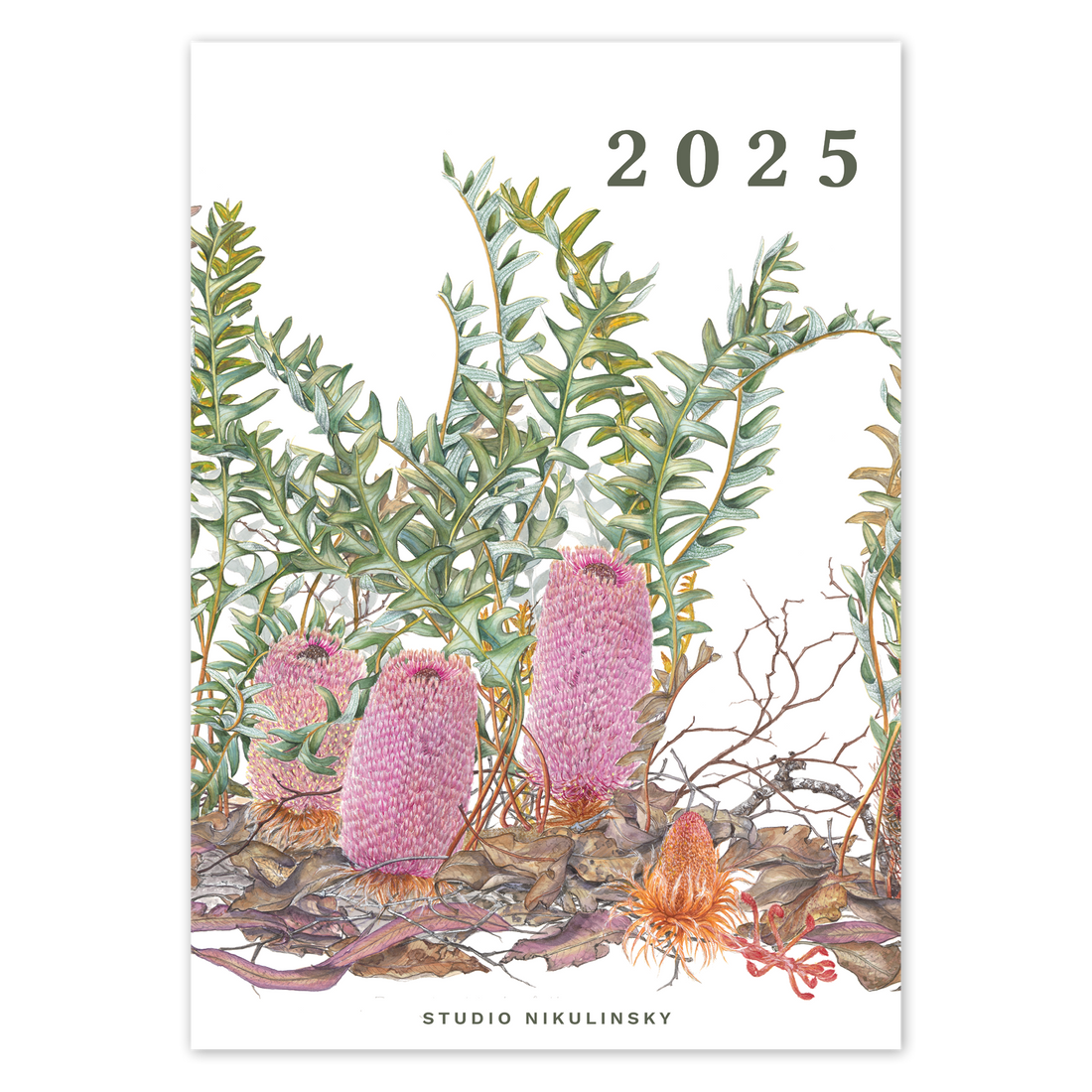
2025 Calendar
The 2025 Philippa Nikulinsky botanical and wildlife watercolour artwork calendar includes the six seasons of the Noongar calendar.
Noongar (also spelled Nyungar, Nyoongar, Nyoongah, Nyungah, Nyugah, Yungar and Noonga) means ‘a person of the south-west of Western Australia,’ or the name for the ‘original inhabitants of the south-west of Western Australia’.
According to the South West Aboriginal Land and Sea Council,
There is no evidence that there has been any other group than Noongar in the South-West. Archaeological evidence establishes that we Noongar have lived in the area and had possession of tracts of land on our country for at least 45,000 years.
The Noongar year is divided into six seasons. Each season represents changes observed annually across the south west of Western Australia. Rather than defined by dates, the calendar reflects observable shifts in the local environment, including temperature, wind, rain and food availability.
- birak (December to January) - season of the young - a very hot and dry period.
- bunuru (February to March) - season of adolescence -long days and short nights. It is the hottest of the six seasons.
- djeran (April to May) - season of adulthood - cooler nights, dewy mornings and falling leaves.
- makuru (June to July) - season of fertility - the coldest season with rain, strong winds, storms and long nights.
- djilba (August to September) - season of conception -very cold and clear days combined with warmer, rainy and windy days.
- kambarang (October to November) - season of birth - longer and warmer days with less rain and abundant wildflowers.
Ongoing gratitude to Professor Stephen Van Leeuwen who assisted with this information several years ago.
